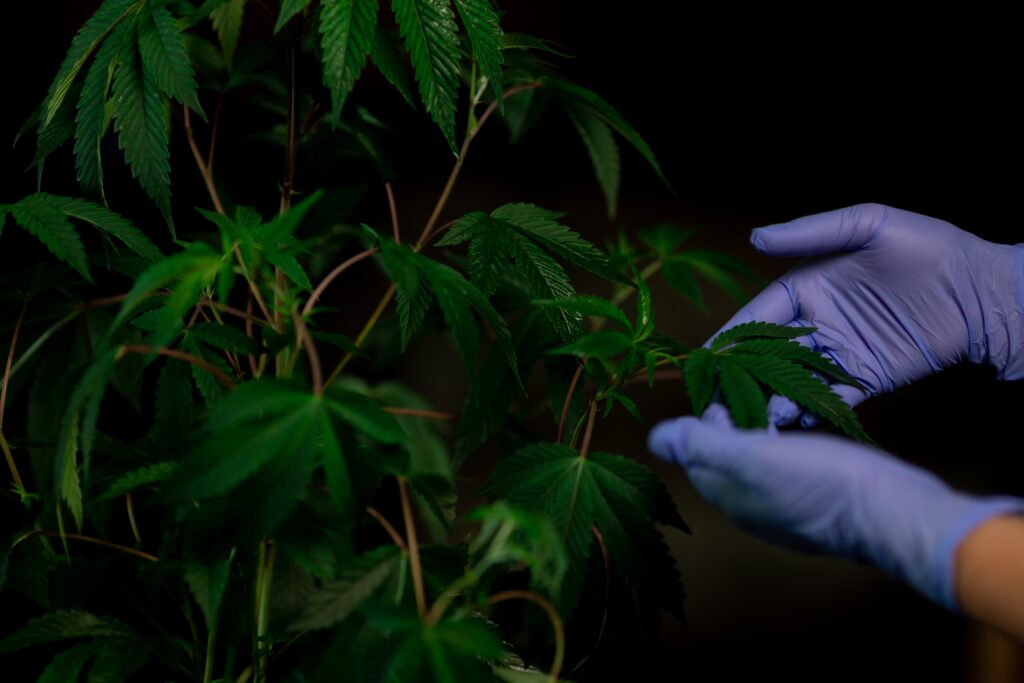
Cannabis Fingerprint ID Analysis
Cannabis is one of the most widely occurring plants. It has been cultivated legitimately around the world for its fiber and seed oil for thousands of years.
Cannabis has a very complex breeding history. Whether its botanical classification is monotypic (sativa) or polytypic (sativa and indica) remains controversial. The cannabis community typically uses the terms “Sativa” and “Indica” to characterize drug strains with high tetrahydrocannabinol (THC) levels.
Since the 1980s, breeding for high psychoactive THC content has occurred very aggressively in North America. Nearly all type of cannabis currently cultivated in the US, Canada and Europe are hybridized, resulting in thousands of strains. In addition, CBD dominant strains and balanced strains (THC � CBD), which have gained increasing attention due to CBD’s use as a therapeutic agents.
Several molecular techniques have been evaluated for their ability to establish genetic relationships among different plants.
Some recent studies have classified C.sativa by genomic DNA, using random amplified polymorphic DNA (RAPD) CBD dominant strains and the balanced strains are closer genetically. This may be attributed to how medical interest in breeding for non-psychoactive, CBD-elevated strains (CBD dominant and balanced strains) has only recently been in vogue, resulting in an overlapping and less diverse gene pool for CBD dominant and balanced strains compared to the longer breeding history for THC strains. Some alleles are only present in CBD dominant strains or in THC dominant strains. More alleles present in balanced strains are shared with CBD dominant strains. One third of these structural SNPs are located on the chromosome containing THCAS
and CBDAS.
The remaining SNPs are located on the other nine chromosomes. An area of potential investigation is how the identified structural SNPs are associated with the production of other cannabinoids, mono- and sesquiterpenes, flavonoids, other compounds, or morphological characteristics.
One third of these structural SNPs are located on the chromosome containing THCAS
and CBDAS. The remaining SNPs are located on the other nine chromosomes. An area of potential investigation is how the identified structural SNPs are associated with the production of other cannabinoids, mono- and sesquiterpenes, flavonoids, other compounds, or morphological characteristics.
By fingerprinting your strains, you can feel safe from malicious attacks in the field, identify the purity and origin of your plants, and use for IP purposes. And These analysis can be leveraged for strain selection in clinical trials and for manufacturing cannabis-based products and medicines.

Cannabis Fingerprint ID Analysis
Get a DNA code (like a Social Security Number) of your proprietary strains and be protected. Every single plant has its unique genetic code. MyFloraDNA translates this genomic code into an exclusive “SSN”.
We’ve created a unique ID chip, able to detect and decode the DNA profile of your plants. This service includes hundreds of molecular markers. With this chip, we can identify unequivocally the genetic differences even from the most closed genetically samples. This Chip is useful to detect and track the desired traits which our customers wish to maintain their breeding programs. MyfloraDNA Helps to Create your own genetic ID Chip using the Whole-Genome Sequencing of your mother strains.
If you have any question or to get more information about our Fingerprint Chip ID, do not hesitate to reach out to our team.



